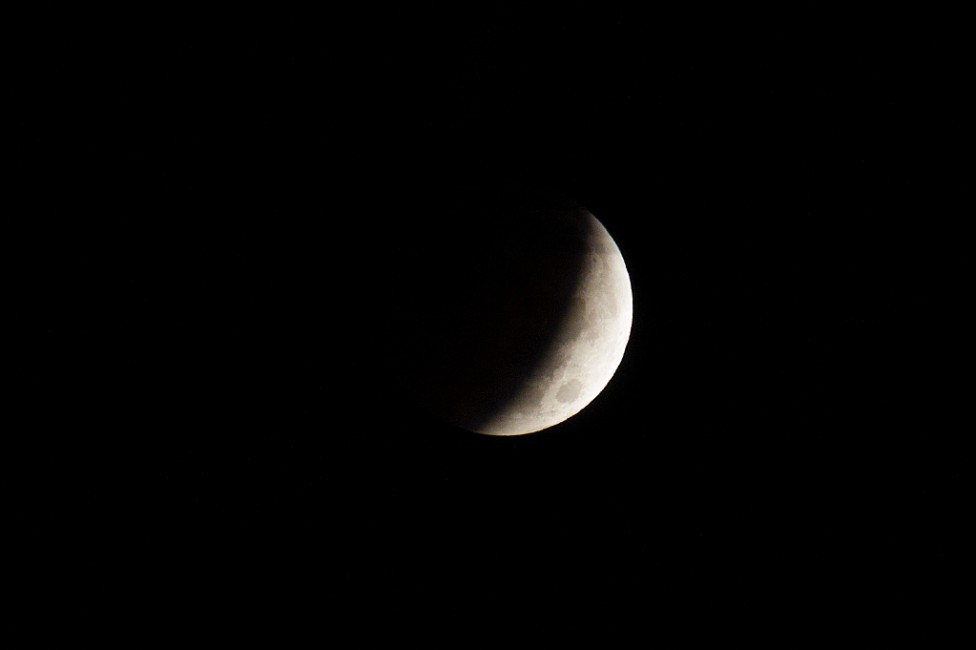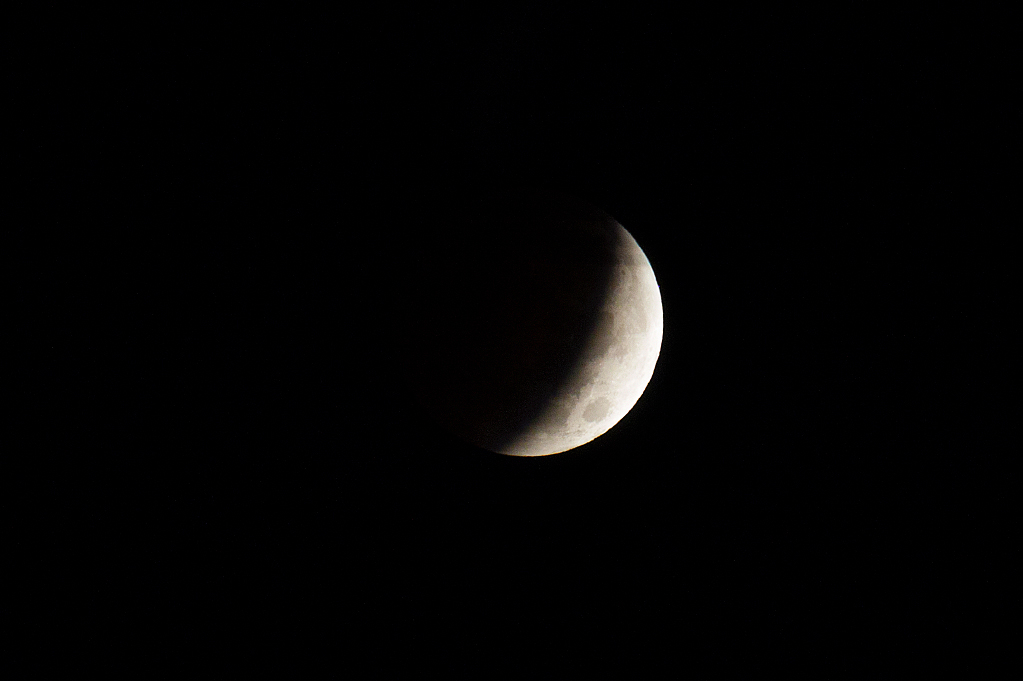
October 27, 2014
The Red Side of the Moon
- as seen by -
 Michelle Faber
Michelle Faber
On October 8, the sun, Earth and moon aligned, casting the moon in the Earth’s shadow for what’s called a total eclipse or “Blood Moon.” This phenomenon gets its name from the reddish-orange color the moon emits as it’s transformed by Earth’s majestic, refracted halo of sunrises and sunsets.
Picture the Earth’s shadow as a cone. The outer areas of this cone cast a lighter shadow, called penumbra. A lunar eclipse begins and ends when the moon is in the penumbra shadow in its orbit around the Earth. In this stage, viewers will notice a light shadow creep across the moon’s surface. The eclipse is fairly unnoticeable for the first and last hour or so.
When the moon passes into the dark inner cone, or umbra, the sun’s rays are completely blocked by the Earth. This is when the eclipse really becomes noticeable, causing a now darker, more dramatic shadow to stretch across the moon as pictured above. The eclipse is total when the moon appears to be covered by Earth’s shadow.
The October 8th Blood Moon was actually the second this year. That’s because we’re in the midst of what’s called a ‘tetrad,’ meaning a total lunar eclipse every six months for two years – something that doesn’t come around very often. Lunar eclipses happen more frequently, but many can be penumbral, too subtle for the average person to notice, or partial, which are more noticeable but only cover a portion of the moon. A tetrad series is an astronomer’s Royal Flush – rare, beautiful, and oh so lucky.
Your next chance to catch one will come on April 4, 2015.
EDITOR’S NOTE: For October, we at Wild View are getting in the spirit of Halloween. We’re celebrating nature that often elicits alarm. The animals that creep and crawl. The full moons that brighten night skies. The bats, the vultures, the snakes. Swallow your anxiety and join us. Fear not, it’s actually quite amazing.
Nikon D4




Leave a Comment